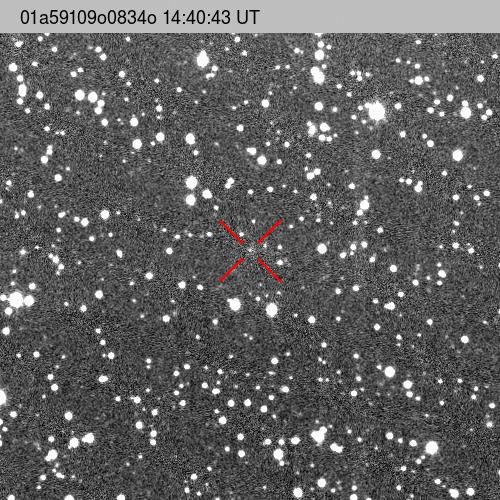
23 Sep SAAO Astronomer discovers new comet C/2020 S3 (Erasmus)
On Sunday 20 September 2020 the International Astronomical Union (IAU) Minor Planet Center announced the discovery of a comet (magnitude ~18.5) by SAAO Astronomer Dr Nicolas Erasmus. The discovery was made from four 30 second exposures taken on Sep 17 UT by ATLAS-MLO at Mauna Loa, Hawaii, in the course of the “Asteroid Terrestrial-Impact Last Alert System” (ATLAS) search program. In general, comets are named after their discoverer and thus the new comet has been designated C/2020 S3 (Erasmus).

An animation of comet C/2020 S3 (Erasmus)
The discovery images were taken at around 16:40 SAST (close to sunrise Hawaii time) and ATLAS’s automated algorithms initially flagged it as a potential near-Earth asteroid. This was because the initial orbit calculation showed that the orbit came close to Earth’s orbit. The automated software then posted the images on the nightly discovery page of ATLAS’s internal system. At this point, a scientist stepped in to monitor and vet the observations before making the final submissions to the Minor Planet Centre (MPC). The algorithm generates many false-positives every night and the human eye and brain are still the best “asteroid detector”.
Dr Erasmus, talking about the discovery said, “While doing the nightly vetting (which I do every ~3 weeks, a duty shared with two others) I noticed that the object in the discovery images had a faint coma and after double-checking with my other ATLAS colleagues that they also see a coma (our agreed procedure) I notified the MPC around 18:30 SAST that this was a potential comet discovery.”
The MPC confirmed the discovery on Sunday 20th September 2020. The comet will reach perihelion (the closest approach to the Sun) around 12 Dec 2020 and will be at its brightest at that point. How bright it becomes will depend on how much it starts outgassing as it approaches the sun but it will most likely not visible to the naked eye.
In early 2021, the SAAO will be installing a new ATLAS telescope in Sutherland. The ATLAS is a NASA-funded automated system of telescopes designed for searching for incoming Near-Earth asteroids (that is, asteroids on a trajectory towards an impact or close approach with Earth). The ATLAS project is a collaboration between the University of Hawaii ATLAS Project and SAAO. The telescope will be similar to the two 0.5-m ATLAS telescopes currently in operation in Maunaloa and Haleakalā in Hawaii.

The four 30 second exposures taken on Sep 17 UT by ATLAS-MLO at Mauna Loa, Hawaii,
Additional Links
https://ssd.jpl.nasa.gov/sbdb.cgi?sstr=C%2F2020%20S3;old=0;orb=1;cov=0;log=0;cad=0#orb
